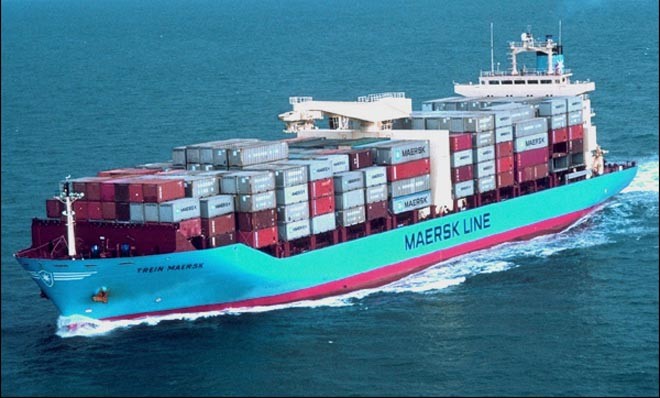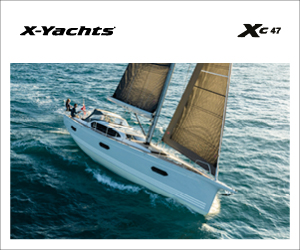How to make your cruising sailboat visible to sea monsters!
by Captain John Jamieson on 8 Jul 2011

Will he see you, and even if he does, will he have time to change course? SW
Did you know that huge ships often have their radar antenna mounted high on the aft superstructure? It may not pick up your cruising sailboat until it's within three miles. At 20 knots, the ship will cover three miles in nine minutes. How can you make yourself more 'radar visible'?
Let's say you are planning a cruise from Florida to the Bahama Islands across the Gulf Stream. Large northbound ships tend to ride the current to ports like New York or Boston. And they often steam at speeds of 20+ knots!
In the best conditions, those ships will not pick you up on radar until you are within 3 miles. This means the ship's officer has only nine minutes to avoid collision after picking up your vessel's 'blip' on radar (3 miles / 20 knots = .15 hours, or 9 minutes). That's not a lot of time to turn a monster 1200 foot long ship that weighs over 110,000 gross tons!
Secret of a Good Reflective Surface:
In his book, 'Radar for Mariners', author Dr. David Burch emphasizes the importance of size and height for a target to produce a good reflective surface that can be picked up by a radar beam.
Small cruising sailboats don't have enough reflective surface area--or size--to return a decent signal back to the ship. A thin mast, sailboat sails, and a hull close to the water offer poor reflective qualities. In tough weather, less reflective surface will be returned when you are in the trough of a wave.
Compare a radar beam to a pebble dropped in a tub of water. Waves go out from the center of the splash and continue to travel until they find a good reflective surface. As soon as the waves hit the sides of the tub, they reflect back toward the origin--or where the pebble was dropped.
To make sure that radar 'waves' bounce off of your small cruising boat, you will need two or more large radar reflectors, hoisted high up off the water. That's even more important in sailboats because when you heel over, your height decreases.
Three Steps to Become More 'Radar Visible'
Follow these tips to purchase, position, and align radar reflectors on any small cruising sailboat:
1. Purchase two radar reflectors that use the principle of corner reflection. These have three flat square or round plates that bisect one another at ninety degree angles. This type of reflector performed better than more expensive ones in recent tests.
2. Hoist each reflector as high as possible in the sailing rigging. Use the mast, backstay, or shrouds.
3. Align the reflector so that the plates on top form a 'V' when pointing straight up. This 'rain-catcher' position aligns the reflector in the proper way when your small sailboat heels over.
As a sailing skipper, you need to make your small cruising sailboat highly radar visible to those sea monsters that ply the shipping lanes day and night. Follow these sailing tips to keep your sailing crew safe and sound anytime you cruise near the busy shipping lanes of the world.
Captain John shows sailing skippers the skills they need for safer sailing anywhere in the world. Visit his website at www.skippertips.com for sailing skills articles, video tutorials, and a free newsletter.
If you want to link to this article then please use this URL: www.sail-world.com/85648

